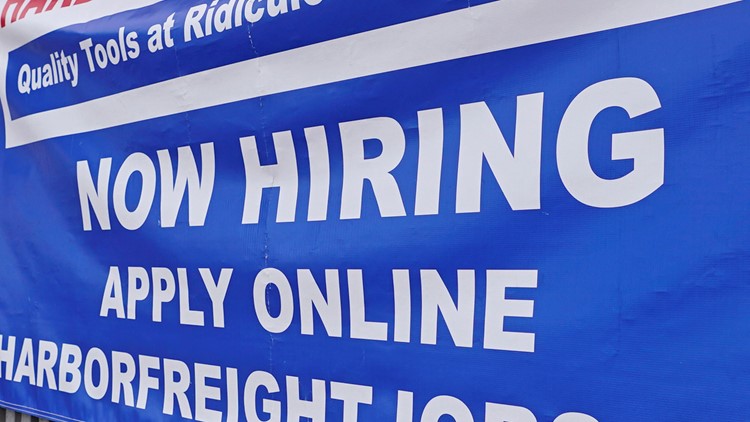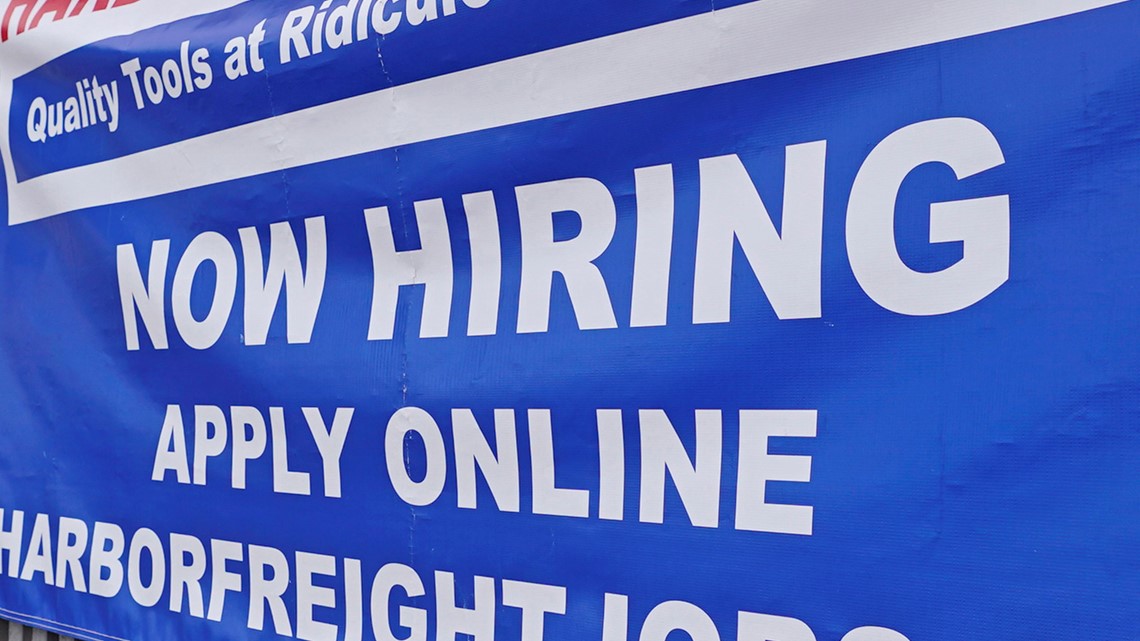
On Friday, economists expect the government to report that the economy added 675,000 jobs in June.
WASHINGTON — With the economy growing rapidly as it reopens from the pandemic, many employers are increasingly desperate to hire. Yet evidence suggests that as a group, the unemployed aren’t feeling the same urgency to take jobs.
Many people who are out of work are either seeking higher pay than they had before or are still reluctant to take jobs in public-facing service companies for fear of contracting COVID-19. How those two trends balance themselves out will likely set the pace for how many open positions employers can fill in the coming months.
On Friday, analysts expect the government to report that the economy added 675,000 jobs in June. That would be a substantial gain but nowhere near the gains that could be expected given the record-high number of job openings.
In fact, some economists have estimated that monthly job growth would be at least twice what the three-month average gain was for March, April and May — 540,000 — if there were no constraints on the number of workers available to fill jobs.
For June, the unemployment rate is projected to have dipped from 5.8% in May to a still-elevated 5.7%.
Total available jobs reached 9.3 million in April, the highest in 20 years of data, according to the Labor Department. The employment website Indeed has said that job postings have increased still further since then.
As the competition to keep and attract workers intensifies, especially at restaurants and tourist and entertainment venues, employers are offering higher pay, along with signing and retention bonuses and more flexible working hours. The proportion of job advertisements that promise a bonus has more than doubled in the past year, Indeed found.
The supply of potential hires is being held back by a variety of factors. Many Americans still have health concerns about working around large numbers of people. About 1.5 million people, mostly women, are no longer working or looking for work because they had to care for children when schools and day care centers shut down. And roughly 2.6 million older workers took advantage of enlarged stock portfolios and home values to retire early.
A temporary $300-a-week federal unemployment benefit, on top of regular state jobless aid, may be enabling some people to be more selective in looking for and taking jobs. Roughly half the states plan to stop paying the supplement by the end of July in what proponents say is an effort to nudge more of the unemployed to seek jobs.
Economists at Goldman Sachs have calculated that in states that are cutting off the federal jobless payment early, the number of people who are receiving state jobless aid is declining faster than in states that plan to pay the $300-a-week benefit until it officially ends Sept. 6. That trend, which suggests could help boost hiring in June and in the subsequent months.
On Thursday, the government reported that the number of people who applied for jobless aid last week fell to 364,000, the lowest level since the pandemic began.
There are also signs that people are re-evaluating their work and personal lives and aren’t necessarily interested in returning to their old jobs, particularly those that offer modest wages. The proportion of Americans who quit their jobs in April reached its highest level in more than 20 years.
Nearly 6% of workers who are in an industry category that includes restaurants, hotels, casinos, and amusement parks quit their jobs in April — twice the proportion of workers in all sectors who did so.
Rising numbers of people quitting jobs, often for higher-paying positions, mean that even employers that have been hiring may be struggling to maintain sufficient staffing levels.
A survey of manufacturers in June found widespread complaints among factory executives about labor shortages. Many said they were experiencing heavy turnover because of what they called “wage dynamics”: Other companies are luring their workers away with higher pay.
Karen Fichuk, chief executive of Randstad North America, a recruiting and staffing firm, said that the Monster job board, which Randstad owns, found that job postings jumped 40% from May to June. Job searches, by contrast, rose just 4%.
“There is a significant gap between supply and demand,” Fichuk said.
The struggle to fill jobs coincides with a swiftly growing economy. In the first three months of the year, the government estimated that the economy expanded at a strong 6.4% annual rate. In the just-ended April-June quarter, the annual rate is thought to have reached a sizzling 10%.
And for all of 2021, the Congressional Budget Office estimated Thursday that growth will amount to 6.7%. That would be the fastest calendar-year expansion since 1984.
In the meantime, consumer confidence rose in June, according to the Conference Board, and is nearly back to its pre-pandemic level. Americans also seem undeterred by recent price increases, with the percentage of consumers who plan to buy a home, car or major appliance all rising. Home prices shot up in April by the most in 15 years.
Factory output is also expanding at a healthy pace, in part because companies are investing more in industrial machinery, aircraft and technology. Those investments could make workers more efficient in the coming years and boost longer-term growth.













































